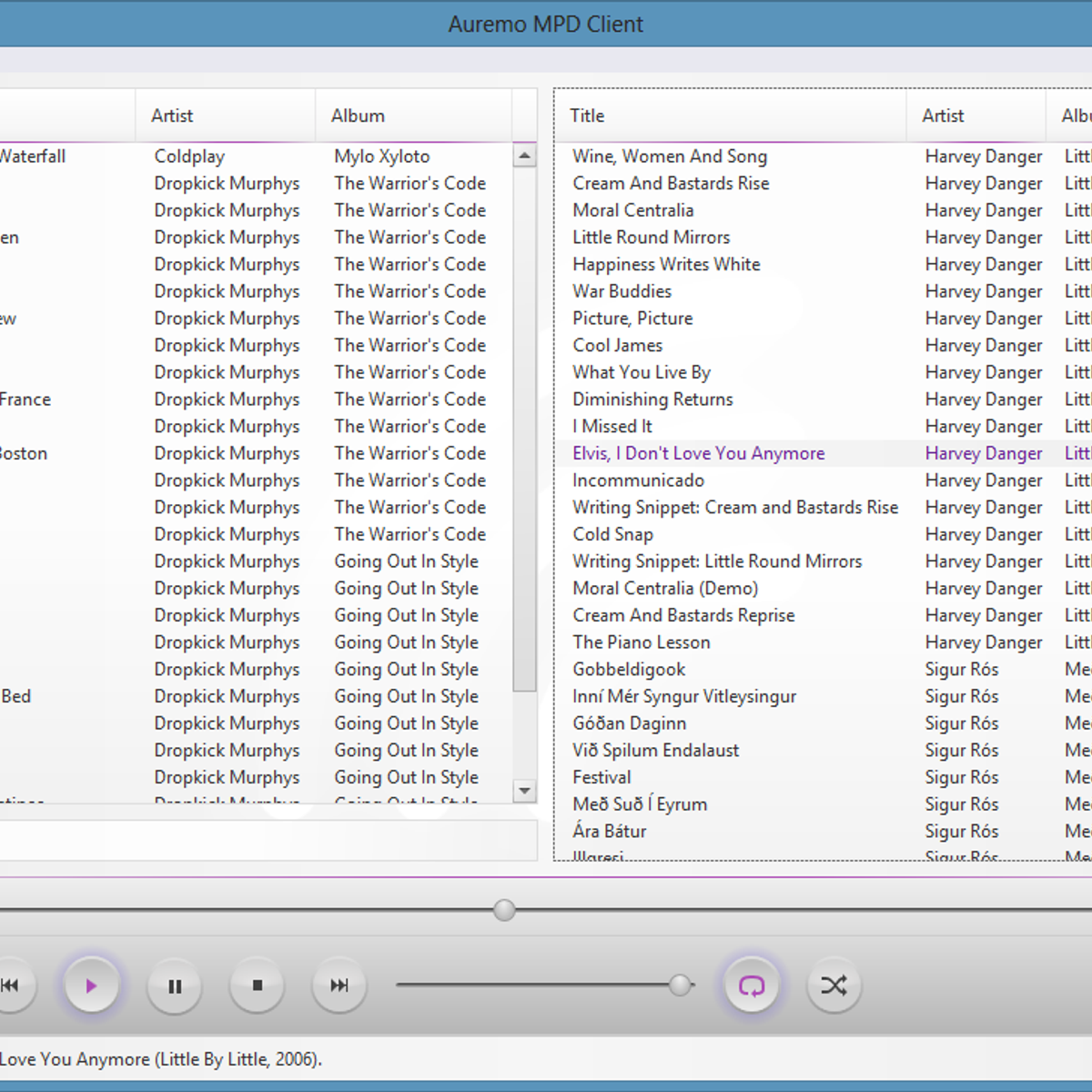Mpd Client For Mac

In the past few months, I’ve covered a whole raft of music players. This time I’m going to walk through Cantata. Cantata is billed as a feature-rich and user friendly client for Music Player Daemon (MPD).
MPD is a powerful server-side application for playing music. In a home environment, you can connect an MPD server to a Hi-Fi system, and control the server using a notebook or smartphone. You can, of course, play audio files on remote clients. MPD can be started system-wide or on a per-user basis.
MPDluxe is a remote controller for MPD, an open-source networked music playing system which can run on a variety of UNIX- and Linux-based systems. MPDluxe allows you to browse the music collection and saved playlists on the MPD server, play, pause and skip tracks, add tracks to and edit the current playlist, search the MPD database and control the playback mode. I hope this is the right place for this! For the last year or so I've been building a new open source MPD client for macOS. I love MPD but I've always been unsatisfied with the options available on macOS.
Cantata was forked from QtMPC in 2015. Resolve mac address to hostname. It’s progressed a long way since then. It’s written in the C++ programming language and uses Qt 5.
Installation
The developer doesn’t provide packages for Linux. But Cantata is popular software, and all the popular distros offer their own package. There’s the full source available too.
While this is cross-platform software, the developer no longer provides binaries for Windows or macOS. But it still compiles on these operating systems.
On the first run, a helpful wizard helps you configure Cantata. You’re prompted to choose either a standard multi-user/server setup, or a basic single user setup. The first option should be chosen if your music collection is shared between users, MPD is running on a different machine, you already have a personal MPD setup, have an advanced MPD setup (such as multiple audio output, full DSD support), or you wish to enable access from other clients. If none of these apply, you’ll probably want to choose the basic single user setup.
If you choose the standard setup, you’re then asked to provide connection details: host, password, and music folder. You can choose to fetch missing album covers, and save these covers into your music folder.
Pages in this article:
Page 1 – Introduction / Installation
Page 2 – In Operation
Page 3 – Song Information
Page 4 – Internet Streaming
Page 5 – Other Features
Page 6 – Configuration Options
Page 7 – Summary